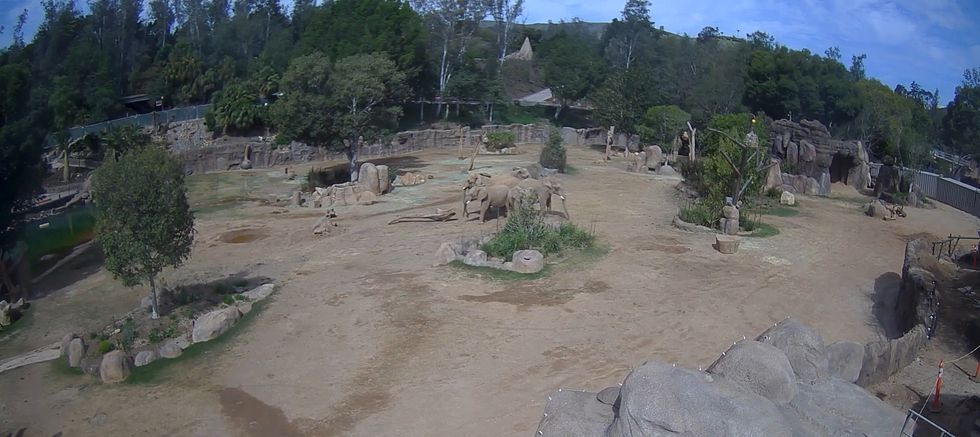Science & Tech
Ancient parasitic wasps discovered growing inside its fossilised hosts
content.jwplatform.com
We know dinosaurs were around 99 million years ago, but now new research has identified a kind of parasitic wasp that was flying around back then (and which has a strange way of catching its prey).
The species now called Sirenobethylus charybdis had a bizarre mechanism was a Venus flytrap-like tail which caught the prey, and then the wasps impregnated them with their eggs, researchers noted in the journal BMC Biology.
How was this new species discovered?
Preserved in amber from the Cretaceous period, palaeontologists were able to analyse 16 specimens of the tiny wasps discovered in Myanmar.
“When I looked at the first specimen, I noticed this expansion at the tip of the abdomen, and I thought this must be an air bubble. It’s quite often you see air bubbles around specimens in amber,” said study coauthor Lars Vilhelmsen, a wasp expert and curator at the Natural History Museum of Denmark in Copenhagen.

“But then I looked at a few more specimens and then went back to the first one. This was actually part of the animal.”
Following this finding, Vilhelmsen and his colleagues from Capital Normal University in Beijing concluded from looking at how each of the wasps was preserved in different positions, the structure was movable.
Sometimes the lower flap, as we call it, is open, and sometimes it’s closed,” Vilhelmsen said. “It was clearly a movable structure and something that was used to grasp something.”
Is this wasp comparable to any species that exist today?
Today, the closest thing that exists in nature would be the Venus flytrap - a carnivorous plant where the leaves spring shut on and digest insects which land on them, as per the study.
“There’s no way you can know how an insect that died 100 million years ago was living. So you look for analogs in modern insect fauna. Do we have anything among wasps or other groups that looks like this?” he said.
“And there’s no real analog within insects. We had to go all the way out of the animal kingdom into the plant kingdom to find something that remotely resembled this.”
Not what it seems
There's more to the wasp's Venus flytrap-like mechanism, and researchers reckon the insect likely did not intend to kill with it.
Rather, the wasp used the injectee as an unintentional host for its eggs and released it once it had injected the eggs.
Consequently, Vilhelmsen says the wasp's larvae started as parasites in the host body and inevitably would eat the host and noted this host would typically be a flying insect that is similar in size to Sirenobethylus charybdis.

Nowadays, living parasitoid wasp species exhibit similar (but not the exact same) behaviour as described, where for instance, cuckoo wasps lay their eggs in the nest of another wasp species and once hatched, the larvae feast on their new hosts’ young.
Amber preservation
For palaeontologists, amber fossils provide great insight as various plants, flowers and creatures have been preserved in the tree resin from millions of years ago.
In the case of the Sirenobethylus charybdis, found in the amber that came from Myanmar’s Kachin region near the border with China, several years ago and donated it to Capital Normal University’s Key Laboratory of Insect Evolution and Environmental Changes in 2016, the study says.
However, the source of the amber has sparked ethical concerns with some palaeontologists calling for a ban on researching amber sourced from Myanmar after there was military coup in 2021.
What is a “Cretaceous weirdo”?
Sirenobethylus charybdis is one of the various insects from this time period described as a Sirenobethylus charybdis "Cretaceous weirdo".
According to Phil Barden, an associate professor at the New Jersey Institute of Technology, this means it "had adaptations that are outside of the bounds of the critters that are alive today."
“This is significant because there are around a million known insect species — even with all of that living diversity, there are still lots of unexpected surprises in the fossil record that are beyond imagination,” he added.
Alternative theory?
Barden noted the credible chance of the flytrap hypothesis, but did note that it was “a bit speculative.
“There appears to be clear evidence that the abdominal components would have had a range of motion. There are also a number of setae, or hairs, that look to be in the right position to detect hosts and potentially immobilize them,” he explained.
An alternative function he has proposed is that the wasp's structure was used to detect prey in soil or to transport baby wasps.
“Today, thousands of parasitoid wasp species are capable of immobilizing hosts without abdominal clasping. Why were these wasps unable to simply rely on their stings or incorporate their mouthparts into host capture as living species do?” Barden asked.
The flytrap theory was based on the fact that the location of the wasp’s egg-laying organ was neighbouring where the trap is.
But since only female wasps have been analysed in this study so far, researchers cannot exclude the possibility that the structure had a mating purpose.
“This is something unique, something I never expected to see, and something I couldn’t even imagine would be found,” Vilhelmsen said. “It’s a 10 out of 10.”
Elsewhere, the staggering number of ants on Earth is 20 times higher than we thought, and woman captures moment she learnt a spider was living in her ear.
How to join the indy100's free WhatsApp channel
Sign up to our free indy100 weekly newsletter
Have your say in our news democracy. Click the upvote icon at the top of the page to help raise this article through the indy100 rankings.
Top 100
The Conversation (0)














